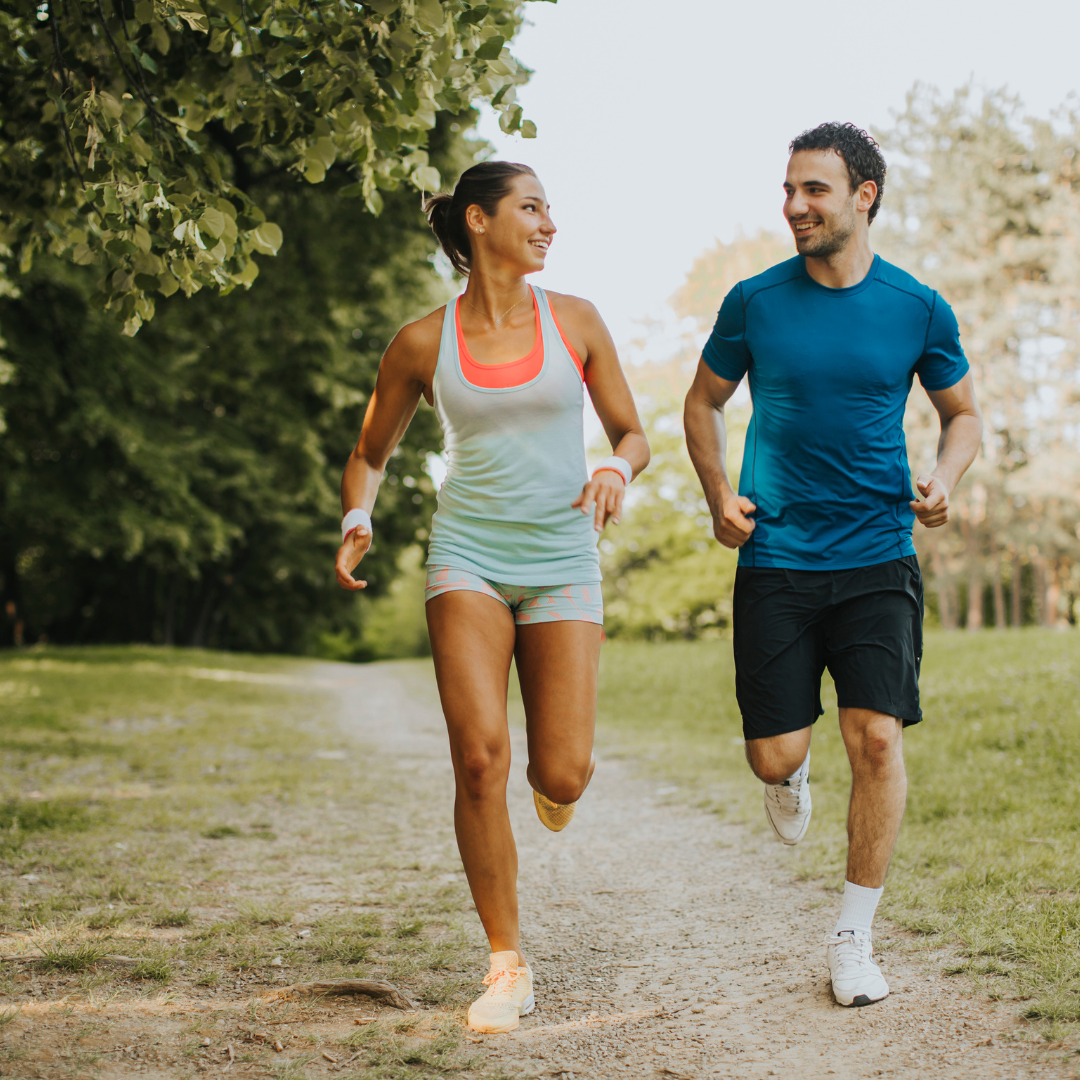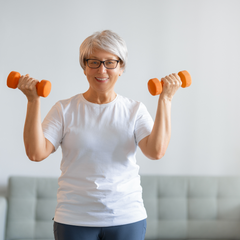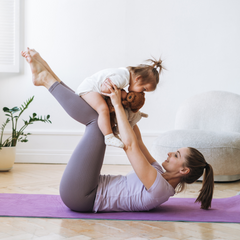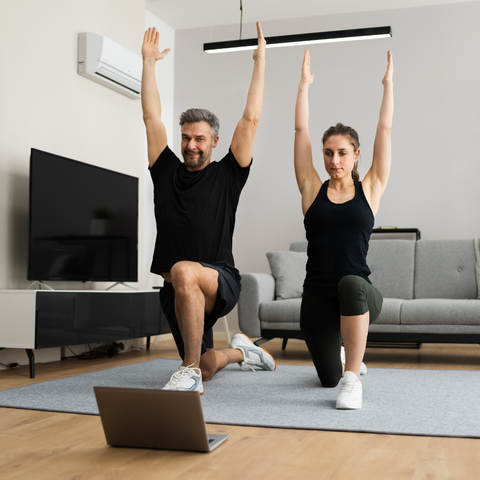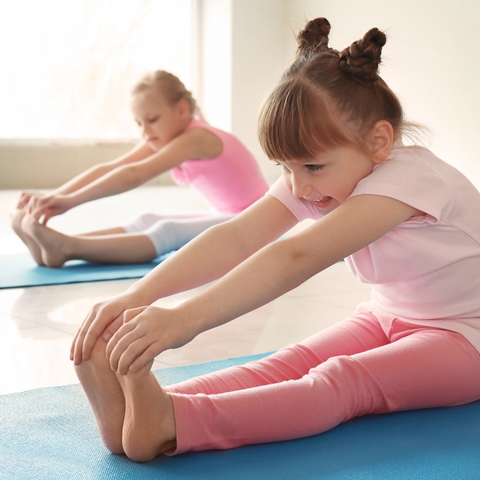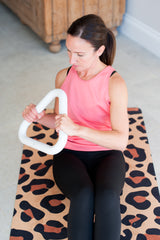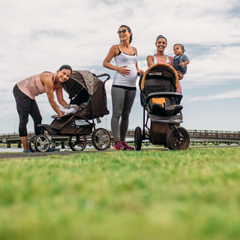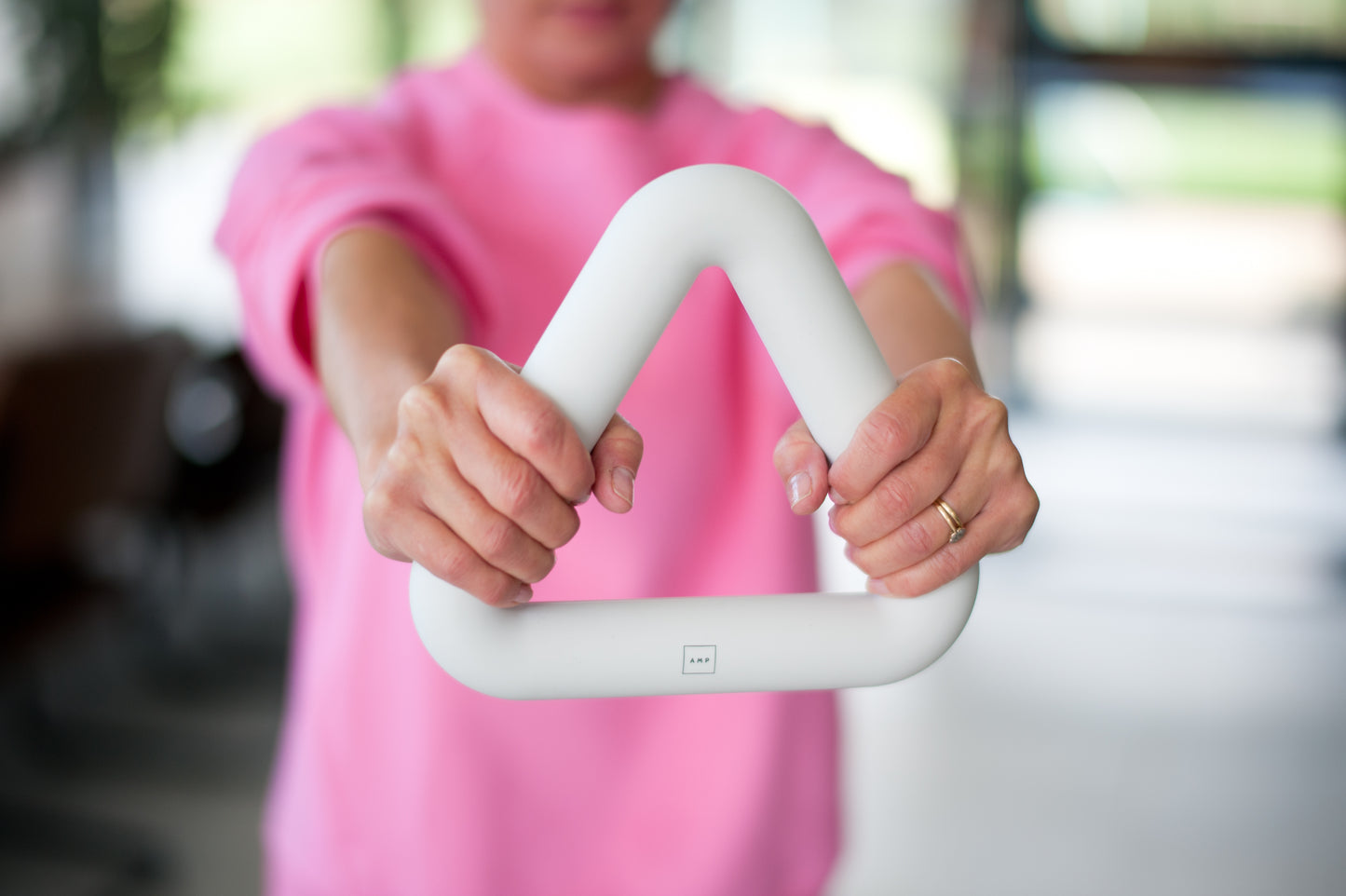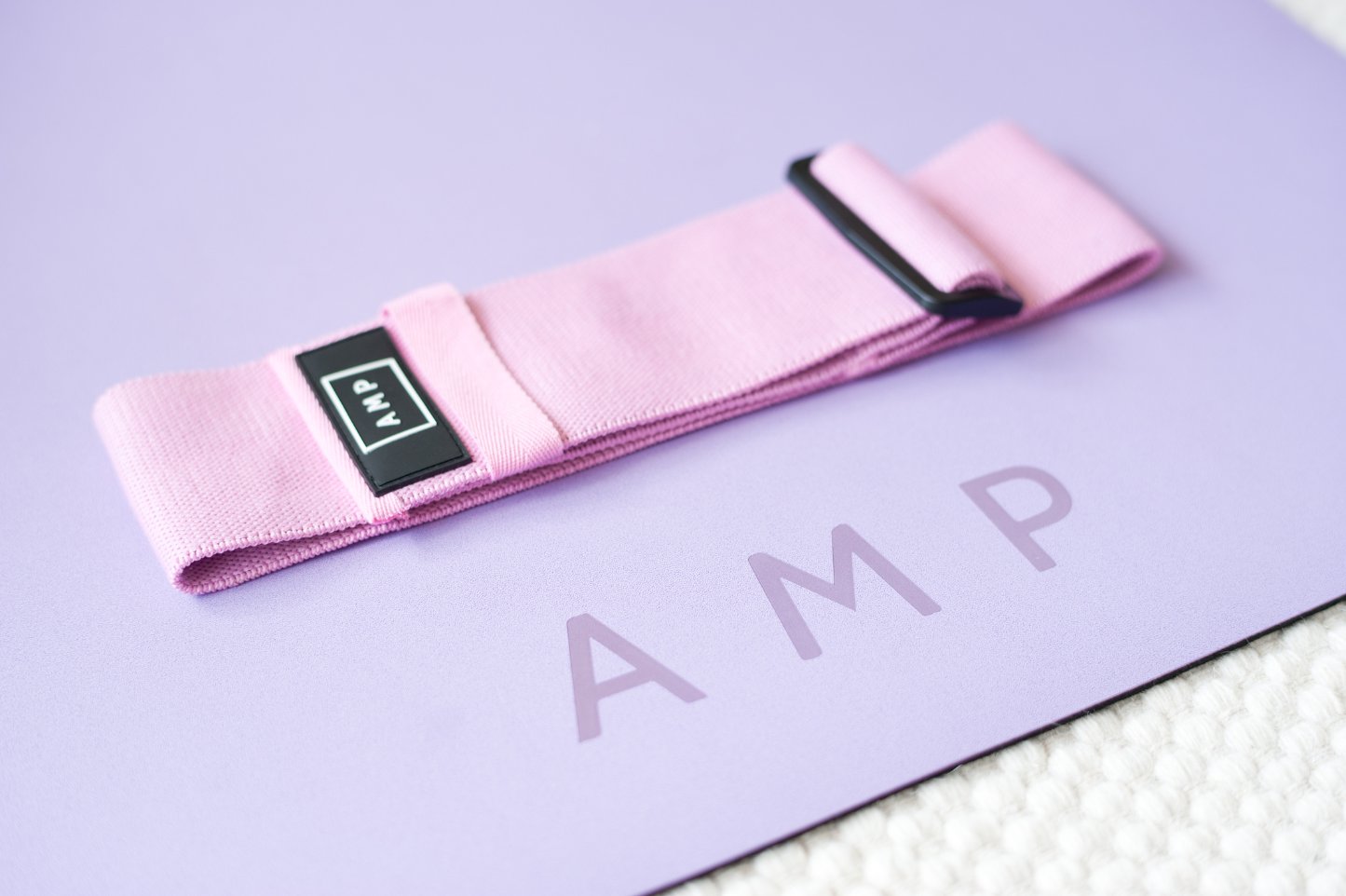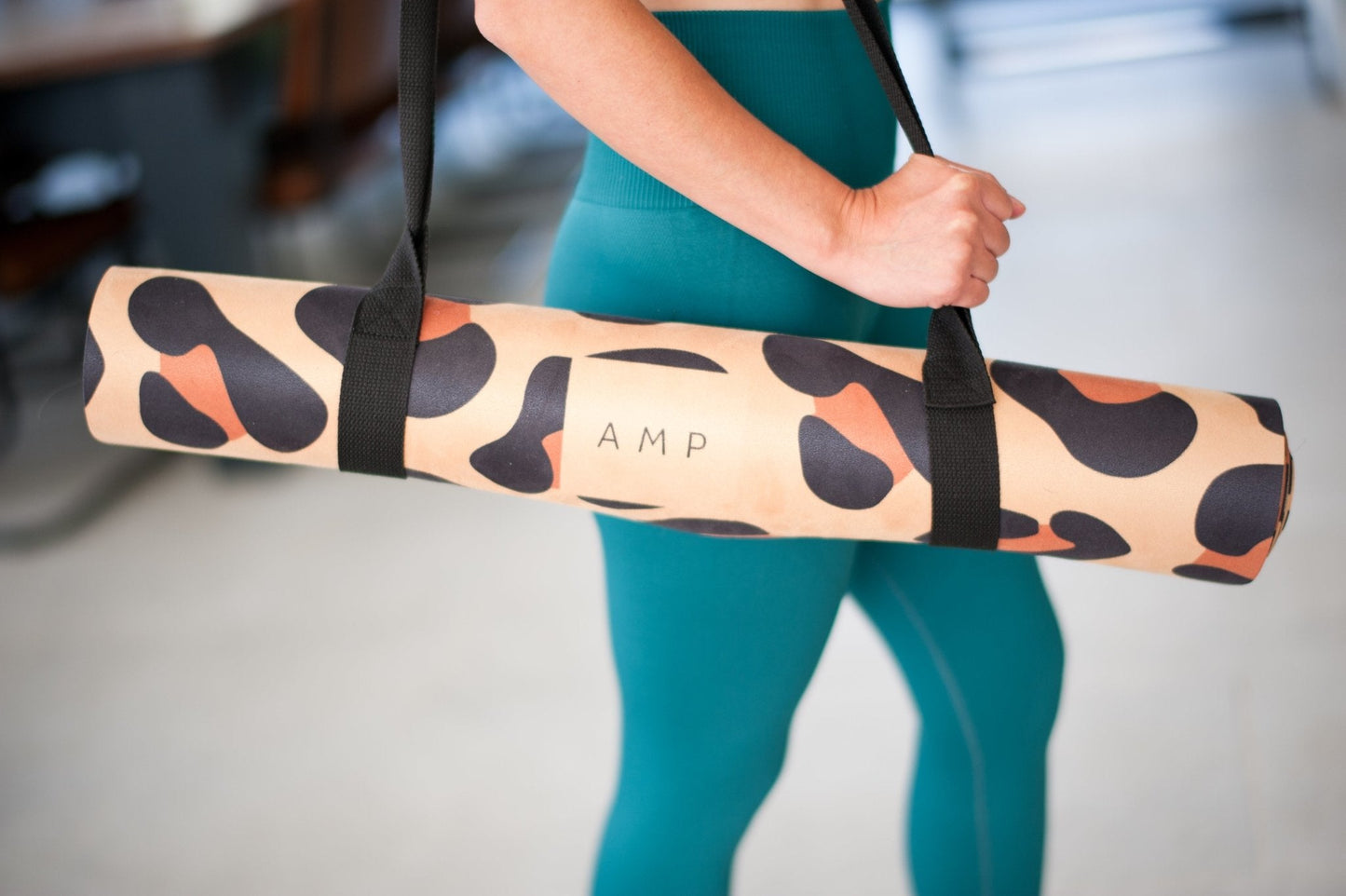Whether you are new to the world of yoga and Pilates, or an experienced practitioner, having the right kind of yoga mat is of utmost importance as it will enhance your practice, maintain comfort, and be safe. At Amp Wellbeing, our select, quality, sustainable range of mats have been developed to meet the varied needs of our customers. We're going to take a peek at the types of yoga mats that we carry, why they are great for various kinds of workouts, and how to be sure they'll last you for years.
TPE Fitness Mat (6mm): Comfortable and cost-effective.
Our TPE Fitness Mats are a suitable solution for clients in need of an optimal level of comfort, yet need to mind their expense limits. Being made of Thermoplastic Elastomer, the mat is eco-friendly; it is free from chemicals and 100% recyclable.
Ideal For: Beginners and those who require extra cushioning during their workouts. The 6 mm thickness provides great shock absorption and is most ideal for yoga, Pilates, or general fitness exercises that require more support.
Key Benefits:
Cushioned comfort: 6mm thick with a soft supportive surface that lessens any pressure to the joints in poses and stretches.
Lightweight and portable: Easily rolls up and is lightweight to carry from place to place, which makes it perfect for home use or even taking it to the studio.
Affordable Luxury: Great design quality offered at an affordable price for people starting their fitness journey.
Microfiber Mats (4mm): Eco-Friendly and Soft
Our Microfibre Mats represent a combination of sustainability and style, with their making from eco-friendly material showing resonance with our environmental commitment.
Ideal For: Yogis and fitness lovers who subscribe to sustainability with no compromise on quality. With 4 mm thickness, it offers the perfect compromise between comfort and stability and suits different types of yoga and Pilates practices.
Key Benefits:
Eco-friendly: with a base layer made out of natural rubber and a top layer from microfiber, this is safe for the environment and good for practice. Benefitting the planet while providing a safe and healthy practice of yoga.
Soft and absorbent: the microfiber surface provides a soft touch and readily absorbs moisture, which makes them perfect for hot yoga sessions.
Stylish Patterns: Available in our signature leopard print designs, these mats add a touch of luxury to your practice.
Lighter weight: At 2.7 kg per mat, this makes for slightly lighter material and weight compared to our vegan suede mats. Easily transported to and from your yoga class with a handy travel yoga carry strap.
Yoga and Pilates Flow vegan leather (PU) Mats: High performance
These Yoga and Pilates PU Mats offer a modern appearance with a curved edge design, making them ideal for those looking for something performing but durable at the same time. Manufactured in Polyurethane (PU), they offer great grip and are resilient in your practice.
Great for: Intermediate to advanced yogis who will put a high level of wear on their mat but still require the one specially designed for invigorating practice. This yoga mat is 5mm thick and, therefore, proves to be very cushiony for staying steady in difficult yoga poses.
Primary Benefits:
Great Grip: The PU-coated surface gives a high-traction finish to ensure stability in dry or sweaty conditions.
Robustness: These mats are meant to be tough in terms of longevity and wear, which just means a very long-term investment for the pro yogi or Pilates enthusiast.
Support and Stability: 5 mm is a nice balance that provides cushioning as well as the support needed for a stable base of advanced poses.
Beautiful Colours: These are made in all the fabulous colours to match our weights. You can co-ordinate and work out in style!

Studio Style: PU mats will elevate the look and feel of your studio classes, with an attractive design and long lasting material, your customers will feel supported during your classes and be back for more.
Image: Rise Wellness Concept studio
Vegan Suede Mats: 4 mm of pure quality, the ultimate combination of grip, comfort, and style
Vegan Suede represent the pinnacle of luxury and functionality. These mats are crafted from high-quality, sustainable materials that are both vegan-friendly and eco-conscious.
Best for: Hot yoga enthusiasts and those who value a non-slip surface for a secure practice. The 4mm thickness provides a firm yet comfortable foundation, ideal for both yoga and Pilates.
Key Benefit:
High Grip Surface: The vegan suede offers the best grip, even during the sweatiest of sessions, hence making it the best mat for all types of yoga.
Sustainable and Vegan: Made up of eco-friendly materials and being completely vegan, these mats are perfect for people looking to align their practice with their ethical values.
Exquisite Feel: The velvet feel of suede will put your practice on a different level, making it a treat—indulging your practice.
Non-slip Base: Our non-slip base is ideal for practice in a safe, secure way, but it does make the mat slightly heavier at 3.3 kg, making it perfect to work out with at home; however, if heading out to your class, these mats also come complete with our handy travel yoga carry strap or upgrade to our yoga mat carry bag for ease of getting to and from class.
Family Yoga: Our children's range of vegan suede mats inspires and supports a beautiful practice of mindfulness, healthy movements, and positive practices that a family can do together.
How to Take Care of Your Yoga Mat
Adequate care is of paramount importance in the life extension of your yoga mat by keeping it unsoiled and well maintained:
Regular Cleaning: After every use, clean the mat with a solution of soft natural cleaning material or water with gentle soap. Avoid harsh chemicals; they can break down the material over time.
Deep Cleaning: Periodically immerse your mat in a small basin of warm soapy water. Agitate gently and rinse. Hang to dry. Do not put your mat in the washing machine or dryer.
Storage: Store your mat in a cool, dry place and out of direct sunlight; light can fade the colours and break down materials. Consider using a mat bag to protect it from dust and dirt when not in use. Care: Always roll your mat loosely; do not fold or crease as that will cause irreversible damage.
Read more here for further detail on our care and cleaning guide, or product description in each mat for specific detail.
Give Your Practice the Right Choice
Here at Amp Wellbeing, we believe a mat can do wonders for your practice, giving you that indispensable platform to work from. Be it about comfort, grip, sustainability, or all three, there's something in our line-up of yoga mats to meet every need.
Ready to elevate your practice?
Look around the rest of our yoga mat collection and see if there is one that can be the ultimate companion in your fitness journey. Step into our community of health-minded individuals appreciating quality, sustainability, and innovation. Purchase a mat that supports not just your body but also the values you practice.
Place your order for the Amp Wellbeing yoga mat today and make that first step to a healthier, more mindful life.
































